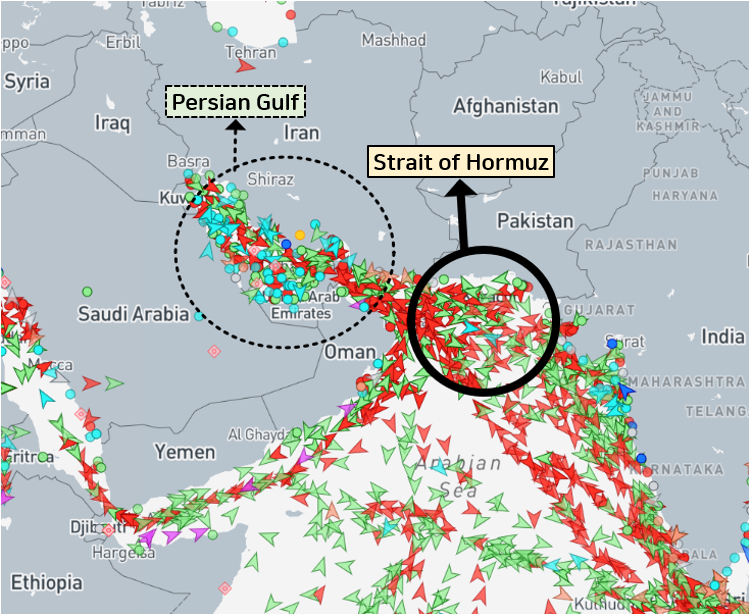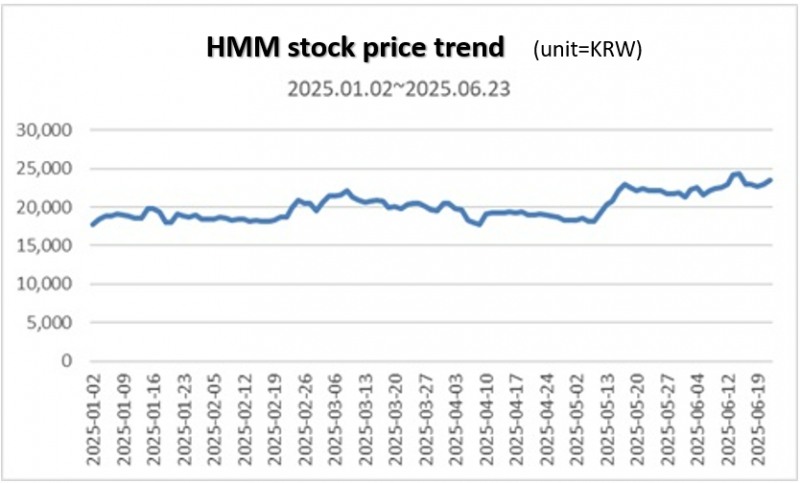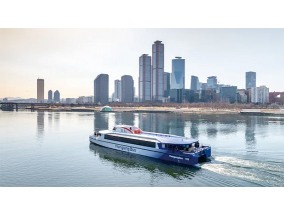 이미지 확대보기
이미지 확대보기On June 22 (KST), Iran’s parliament approved a resolution to close the Strait of Hormuz. In response, tanker freight rates soared 30.55% week-on-week to $30,745 (about KRW 42.44 million).
In contrast, the Shanghai Containerized Freight Index (SCFI) dropped sharply, falling 10.5 percentage points week-on-week to 1,870 points as rates for North American routes declined for a second consecutive week. The Middle East is dominated by tanker traffic rather than container ships, so the SCFI is not heavily influenced by this market.
As the SCFI’s drop suggests, concerns over a Hormuz closure are not expected to have a direct impact on HMM, which mainly operates container vessels. HMM currently has only one container route passing through the Strait of Hormuz. The vessel on this route is reportedly operating on schedule. Container ships run on fixed schedules and routes.
 이미지 확대보기
이미지 확대보기The industry’s main concern is what happens if the Strait is actually closed. Unlike the Suez Canal, which can be bypassed by rounding the Cape of Good Hope, there is no alternative sea route for the Strait of Hormuz. If blocked, vessel movement would be impossible until the strait reopens.
However, this scenario is still somewhat removed from HMM’s core business. An industry insider noted, “It’s impossible to move 300,000 tons of crude oil by land, but for container ships, it is theoretically possible to unload standardized containers at ports and transport them by truck or rail.”
The blockade of the Strait of Hormuz has not yet become a reality. A final decision from the Supreme National Security Council (SNSC), chaired by Iranian President Masoud Pezeshkian, is required, and the approval of Supreme Leader Ali Khamenei is also necessary.
An HMM spokesperson stated, “Our container route through the Strait of Hormuz is still operating normally. If any issues arise, we are reviewing various contingency measures, including alternative ports.”
Meanwhile, HMM shares closed up 2.17% at KRW 23,500 on the day, reflecting heightened market interest in shipping stocks amid the crisis.
 이미지 확대보기
이미지 확대보기Shin Haeju (hjs0509@fntimes.com)
가장 핫한 경제 소식! 한국금융신문의 ‘추천뉴스’를 받아보세요~
데일리 금융경제뉴스 Copyright ⓒ 한국금융신문 & FNTIMES.com
저작권법에 의거 상업적 목적의 무단 전재, 복사, 배포 금지








![용산구 ‘나인원한남’ 88평, 9억 상승한 167억원에 거래 [일일 아파트 신고가]](https://cfnimage.commutil.kr/phpwas/restmb_setimgmake.php?pp=006&w=284&h=214&m=5&simg=2025071010042800278b372994c952115218260.jpg&nmt=18)










